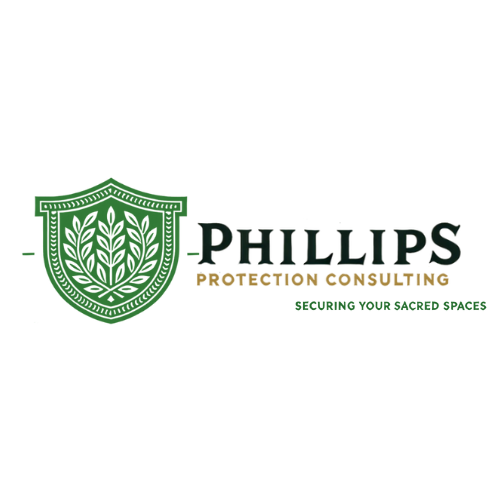Buying a home is one of the most significant investments a person can make. It’s not just about finding a place that meets your aesthetic preferences and functional needs; it’s also about ensuring that your future home provides a safe and secure environment for you and your loved ones. While many home buyers focus on location, price, and interior features, one critical aspect often overlooked is a comprehensive security assessment. In this blog post, we’ll explore why every home buyer should prioritize security assessments before closing the deal.
Understanding the Importance of Security Assessments
What is a Security Assessment?
A security assessment involves a thorough examination of a property to identify potential security vulnerabilities. This process includes evaluating the physical security of the home, the surrounding environment, and the effectiveness of existing security measures. Professional security consultants, like those at Phillips Protection Consulting, conduct these assessments to provide home buyers with a detailed report on potential risks and recommendations for improving security.
Why Security Assessments Matter
- Revealing Hidden Vulnerabilities: A beautiful home with all the amenities you desire might still have hidden security flaws. These could range from easily bypassed locks to poorly lit areas that invite intruders. A security assessment helps uncover these issues before they become problematic.
- Providing Neighborhood Safety Insights: Even if a home is secure, its location can significantly impact your safety. A security assessment includes an analysis of the neighborhood, crime rates, and proximity to emergency services, helping you gauge the overall safety of the area.
- Protecting Your Investment: Homes are substantial financial investments. Ensuring that your property is secure can prevent future losses due to theft, vandalism, or other security breaches. It also enhances the resale value of your home by addressing security concerns that future buyers might have.
- Peace of Mind: Knowing that your new home is secure allows you to enjoy it fully without constant worry about potential security threats. This peace of mind is invaluable and contributes to a better quality of life.
Key Components of a Security Assessment
A comprehensive security assessment covers several critical areas:
Physical Security
- Doors and Windows: Assessing the strength and quality of all entry points, including doors, windows, and garage doors. This involves checking locks, frames, and potential entry points for intruders.
- Perimeter Security: Evaluating fences, gates, and landscaping that can either deter or aid potential intruders. Properly maintained and designed perimeters can significantly enhance security.
- Lighting: Ensuring that the property has adequate lighting to deter nighttime intrusions. Motion-sensor lights and well-lit pathways are crucial components of a secure home.
Technological Security
- Security Systems: Reviewing existing alarm systems, surveillance cameras, and other technological measures. A modern, integrated security system can provide real-time monitoring and quick responses to security breaches.
- Smart Home Devices: Evaluating the security of smart home devices like doorbell cameras, smart locks, and home automation systems. Ensuring these devices are secure from hacking and other digital threats is essential.
Environmental Security
- Neighborhood Analysis: Examining crime statistics, neighborhood watch programs, and proximity to police and fire stations. This information provides a broader context of the security environment around your new home.
- Natural Surveillance: Assessing how the home’s layout and design contribute to natural surveillance. Homes with clear sightlines and visibility from neighbors tend to be less attractive targets for criminals.
The Process of Conducting a Security Assessment
Step 1: Initial Consultation
The process begins with an initial consultation with a security expert. This meeting allows you to discuss your concerns and expectations, providing the consultant with a clear understanding of what you need from the assessment.
Step 2: On-Site Evaluation
The security consultant will visit the property to conduct a detailed on-site evaluation. This includes inspecting all physical and technological security measures, as well as assessing the surrounding environment.
Step 3: Risk Analysis
After the on-site evaluation, the consultant will analyze the collected data to identify potential security risks. This analysis considers factors such as crime rates, physical vulnerabilities, and the effectiveness of existing security measures.
Step 4: Recommendations
Based on the risk analysis, the consultant will provide a detailed report with recommendations for improving the property’s security. These recommendations might include upgrading locks, installing additional lighting, or integrating more advanced security systems.
Step 5: Implementation
Finally, the consultant can assist with the implementation of the recommended security improvements. This ensures that all measures are properly installed and functioning as intended, providing you with a secure home.
Common Security Issues Uncovered in Assessments
Weak Entry Points
One of the most common issues found during security assessments is weak entry points. This includes doors with inadequate locks, windows that are easily forced open, and poorly secured garage doors. Strengthening these entry points is crucial for preventing unauthorized access.
Inadequate Lighting
Many homes lack sufficient exterior lighting, making them attractive targets for nighttime intruders. Installing motion-sensor lights and ensuring all pathways and entry points are well-lit can deter potential criminals.
Outdated Security Systems
Older security systems might not provide the level of protection needed in today’s environment. Upgrading to a modern system with real-time monitoring, remote access, and integration with smart home devices can significantly enhance security.
Poor Neighborhood Safety
Even if a home is secure, a high-crime neighborhood can pose significant risks. Security assessments often reveal issues with neighborhood safety, prompting buyers to reconsider their purchase or invest in additional security measures.
Conclusion
Investing in a home is a monumental decision, and ensuring its security should be a top priority. A comprehensive security assessment conducted by professionals like Phillips Protection Consulting can provide invaluable insights into potential vulnerabilities, neighborhood safety, and ways to protect your investment. By prioritizing security assessments before closing the deal, home buyers can make informed decisions, enhance their peace of mind, and ensure their new home is a safe haven for years to come. Don’t overlook this critical step in the home-buying process—your safety and security are worth it.
